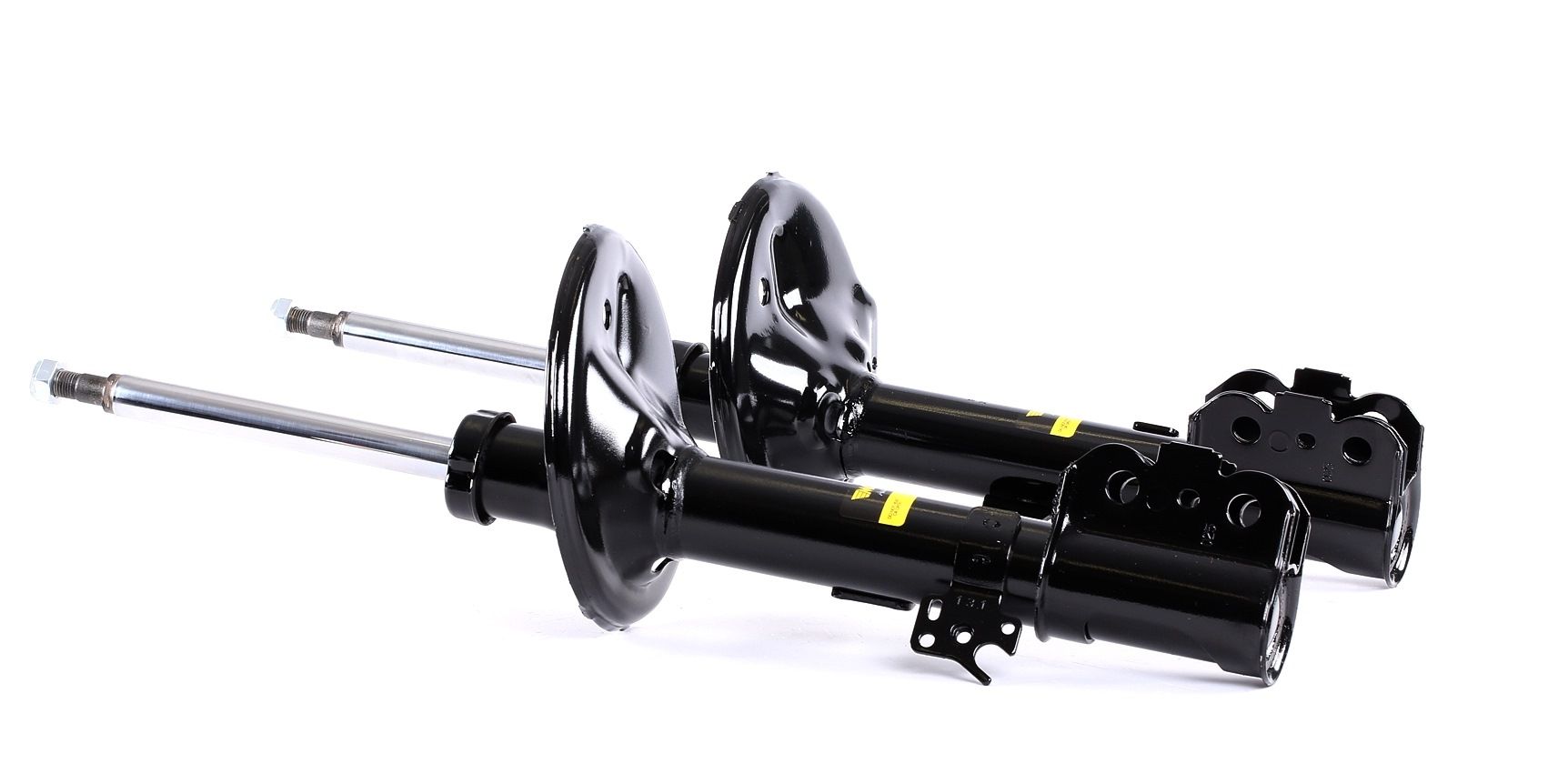Table of Contents
Bad Shock Absorber Symptoms: How to Identify and Diagnose Issues
Is your car feeling bouncy or unstable when driving on bumpy roads? This could be a sign of failing shock absorbers. Identifying and diagnosing shock absorber issues early is crucial for maintaining vehicle stability and comfort. Check out the most common signs of worn shocks and find out when to replace them.
Broken shock absorber symptoms
The most common shock absorber symptoms affect how the car feels when driving. If it starts to bounce excessively when driving over bumps or rough surfaces, feels unstable, or dives at the front when braking, for example, you may need to install new shock absorbers on your car.

Top signs of bad shock absorbers:
- Excessive bouncing – due to the shocks’ weakened dampening abilities.
- Vibrations in the steering wheel – particularly noticeable at high speeds or on rough terrain.
- Uneven tyre tread wear – due to inconsistent contact with the road
- Poor ride quality – the vehicle will not be able to absorb road impacts as well, leading to discomfort while driving.
- Leaking shocks – you may be able to see oil leaking around or out of the components due to damage.
- Longer braking distances – due to improper weight distribution and reduced road contact.
- Metal knocking or clunking sounds – worn or damaged shocks may cause metal parts to knock against each other, creating noise.
- Rolling, diving or squatting – the shocks are unable to transfer the vehicle’s weight properly, causing the car to sink or dive forwards or backwards.
Bad front shock symptoms
Symptoms of bad front shocks usually include nose diving at the front of the vehicle when braking, unstable or “floaty” steering, unevenly worn front tyres, and excessive vibrations. This is mostly due to the fact that the shock absorbers can no longer support the weight of the vehicle or effectively protect the suspension from impacts.


 TRW Shock absorber
Front Axle, Gas Pressure, Ø: 45, Twin-Tube, Suspension Strut
TRW Shock absorber
Front Axle, Gas Pressure, Ø: 45, Twin-Tube, Suspension Strut

 GH Suspension Strut
Front Axle, Right, Left, Front Axle Right, Front Axle Left
GH Suspension Strut
Front Axle, Right, Left, Front Axle Right, Front Axle Left
Bad rear shock absorber symptoms
Bad rear shock absorber symptoms may include dipping or squatting at the rear of the vehicle when accelerating, bouncing at the rear or a loss of wheel traction, rear uneven tyre wear, and a vibrating steering wheel. Worn components will not effectively maintain the vehicle’s stability or balance in rough road conditions.
Worn shock absorbers symptoms
In summary, common symptoms of worn shock absorbers include excessive bouncing, vibrations in the steering wheel, uneven tyre wear, poor ride quality, leaking shocks, longer braking distances, and metal knocking sounds.
When the front shocks are worn, you’re more likely to experience nose diving when braking, unstable steering, and excessive vibrations due to the shocks' inability to support the vehicle's weight. Bad rear shocks may cause the rear of the car to dip when accelerating, bouncing at the rear, loss of wheel traction, and a vibrating steering wheel.

How to tell if shock absorbers need replacing
If you notice one or several of the symptoms mentioned above, such as bounciness, instability, uneven tyre wear, and impaired handling and braking, it may be time to replace your shock absorbers. Be sure to check your car's steering parts and suspension to ensure a thorough diagnosis.
On average, most shocks last roughly 4 to 5 years or 50,000 to 100,000 miles before needing a replacement. However, this will also largely depend on the driving conditions and quality of the parts. For example, offroad drivers can expect to replace their shocks more often due to increased stress.
Top products related to this topic:















